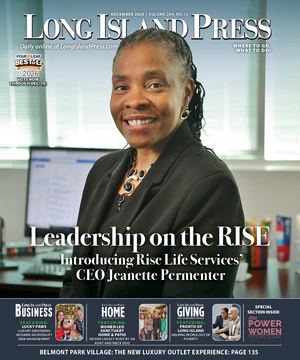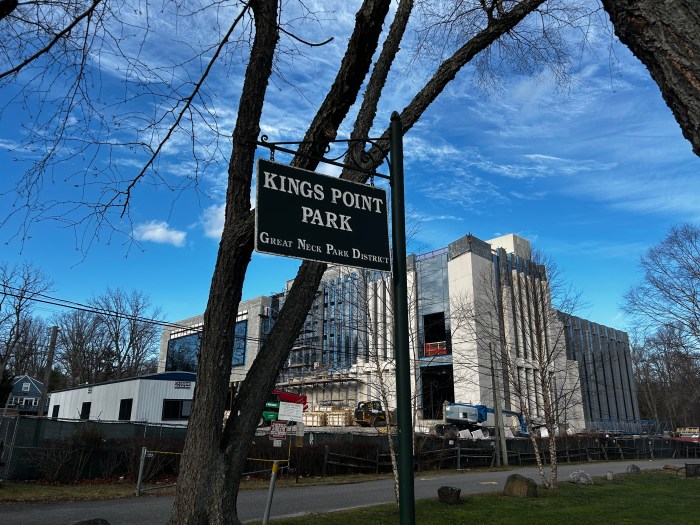The recently released report by the Rockefeller Institute of Government on the state’s Foundation Aid funding formula for school districts is bound to stir one debate important to Nassau County.
It should actually stir two debates.
The first debate will be over the study’s call for an overhaul of the Foundation Aid formula, which last year accounted for $24.9 billion of a $35.9 billion state aid package and helped New York achieve the highest per-pupil spending of all 50 states at $24,040.
The Rockefeller Institute’s report called for revising weightings for English Language Learners, outdated poverty data, the
accuracy and specificity of regional costs, and pointed out that school districts are being asked to do things now that weren’t expected of them and weren’t even part of the funding equation nearly two decades ago.
But the overhaul’s focus was eliminating the so-called “save harmless” provision, which ensures that all districts receive at least the same Foundation Aid funding as the previous year—even if they enroll fewer students.
Unaddressed was why more affluent districts receive Foundation Aid when its purpose was to ensure that less affluent school districts meet the state’s constitutional guarantee of a sound, basic education and perhaps make the playing field a little more equal.
The Rockefeller Institute’s report, ordered by state lawmakers last year, found that 88% of the state’s school districts have experienced enrollment declines over the past decade and nearly one-fifth of all school districts benefitting from the Foundation Aid allocations are considered “low needs.”
This is a polite way of saying they are affluent districts with school districts spending $40,000 or more per pupil, thanks to high property values. These are almost invariably the highest-performing school districts, proving that money may not buy you love but it does buy students success.
The elimination of the “save harmless” provision might seem logical on the surface. The fewer students there are, the less state aid there will be.
But the immediate elimination proposed by Gov. Kathy Hochul last year set off a firestorm on Long Island where 40 of the 117 school districts would have seen a decrease in state aid, some by as much as 10%.
On the North Shore over 10 years, Carle Place’s population dropped 8.9%, East Williston 8.2% and Manhasset 8.1% while Herricks grew 12.8%, Floral Park-Bellorose 8.6% and Mineola 6.1%
In the face of this widespread opposition, the state Legislature made a bipartisan decision to at least postpone eliminating the “save harmless” provision and increase state education aid.
Unlike local school funding, which relies on a district’s property taxes, this increase in state aid was provided through income taxes paid by residents across the state.
The second issue that should be debated based on the Rockefeller Institute’s study is housing.
The “save harmless” provision would not need to be applied if the school populations in those districts were not declining.
But, in many cases, school officials from districts with declining populations oppose new housing in their communities, often citing the cost of additional students and the difficulty of finding room for them in their schools.
Both things cannot be true. Either a district has too many students or too few. Not both.
We doubt taxpayers from across New York State would want to pay for districts losing student populations due to their opposition to new housing.
This is particularly true at a time when Hochul has identified an 800,000-unit housing shortfall in the state that is driving up the cost of rentals and home prices beyond the means of many residents. This, in turn, drives up the cost of hiring staff for private and public jobs, including school teachers, and sends New York families to flee the state or worse.
New York City recently reported that more than 146,000 schoolchildren experienced homelessness during the last school year.
The housing shortage on Long Island can be attributed to zoning, land-use restrictions and community opposition.
Hochul made two unsuccessful attempts to address the state’s housing shortage.
She initially proposed legislation requiring municipalities to allow homeowners to build an accessory dwelling unit, such as a modest apartment, over a garage or a basement unit, on all owner-occupied residential zoned lots.
The governor later sought to have the state step into local zoning decisions if municipalities did not achieve a 3% increase in housing units over three years, primarily through transit-oriented developments.
But Hochul backed off both times when Nassau County officials from both parties and some school officials vehemently criticized the plans.
Hochul’s third try to encourage new construction to address the state’s housing crisis appears to be the charm.
The program makes designated pro-housing communities eligible for state economic development money under various programs. She has received applications for this designation from across New York, many from Long Island. Several, including Mineola, Hempstead and Long Beach, have already been approved for the funding.
The New York City Council recently approved a compromise version of Mayor Eric Adams’ zoning overhaul plan called “City of Yes for Housing Opportunity,” which allows for “a little more housing in every neighborhood.”
This seems like a good approach for all of Nassau’s communities to follow – a little more housing in every neighborhood.
It is a better way to avoid losing state education aid than applying political muscle.





























